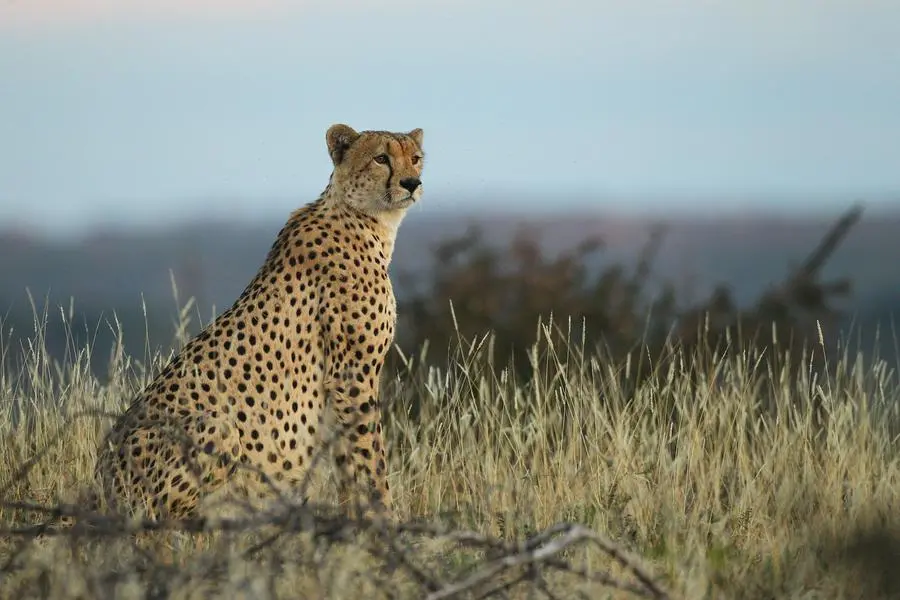PHOTO
RIYADH — Minister of Environment, Water and Agriculture (MEWA) Eng. Abdulrahman Al-Fadley, who is also the Chairman of the National Center for Wildlife Development (NCW), has inaugurated the Kingdom's Cheetah Breeding and Resettlement Program and the strategies to protect them.
Al-Fadley inaugurated the program launched by NCW during a workshop organized by the center with the participation of local and international experts and specialists.
NCW held the workshop in order to announce the results of research related to the discovery of the cheetah (Acinonyx Jubatus Venaticus), which was announced last year. The center indicated at that time that it had found 17 cheetah fossils in one of the dahl (sinkhole) in northern Saudi Arabia. The fossils preserved all features of the animal.
The research revealed the chronological age of the samples, and the cultural and historical dimensions of the cheetah in the Arabian Peninsula.
Al-Fadley said NCW's researchers, with the participation of international experts, were able to determine the time the beasts perished and extract their genetic makeup.
Additionally, they were able to determine their type and compare it to the genetic sequence of cheetahs that are currently in the reserves of NCW and their species spread around the world.
These results contributed to supporting the conservation program that the center is currently working on to breed cheetahs and resettle them in Saudi Arabia, the minister said.
Al-Fadley said cheetah is one of the species that became extinct in the Arabian Peninsula more than 50 years ago, noting that even their specimens are very rarely found in museums or research centers.
The discovery of cheetah fossils indicated the animals lived in hordes in the northern regions of the Kingdom, Al-Fadley said, adding that the discovery provided current generations an opportunity to clearly see the beasts.
For his part, CEO of NCW Dr. Mohammad Qurban said that the disclosure of the results of the research provided valuable information that contributed to the breeding and resettlement program.
Dr. Qurban said that the results will positively affect research related to wildlife in the future, in addition to motivating researchers to raise their ceilings and find more evidence in this field.
The studies revealed that the ages of the discovered samples varied from 4,000 years to 120,000 years, Dr. Qurban said, pointing out that this confirms the historical existence of the cheetah in the Arabian Peninsula as one of the most important components of wildlife in the region.
The genetic analysis of the samples proved that the cheetahs originally belonged to the region, Dr. Qurban added.
© Copyright 2022 The Saudi Gazette. All Rights Reserved. Provided by SyndiGate Media Inc. (Syndigate.info).





















